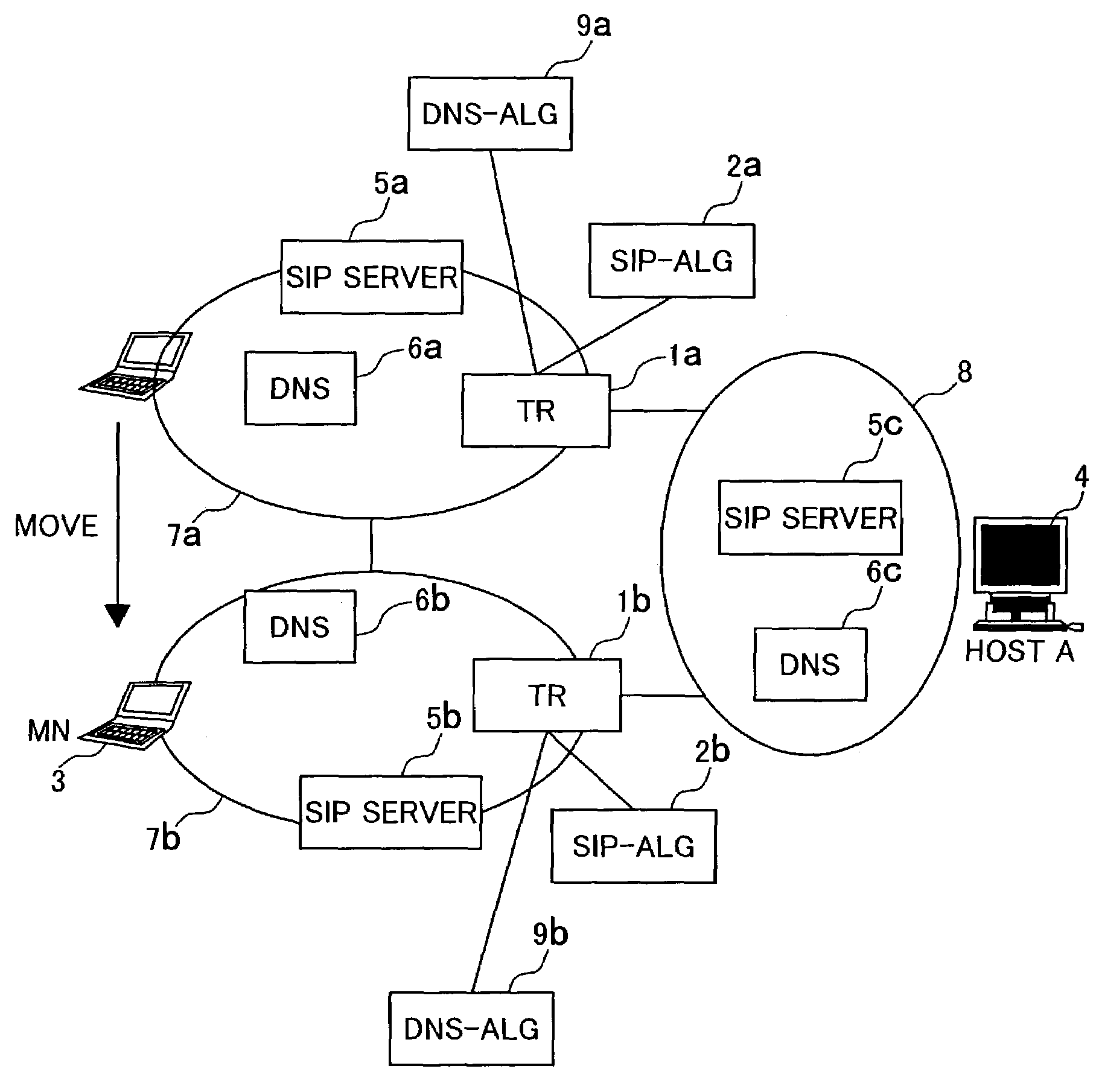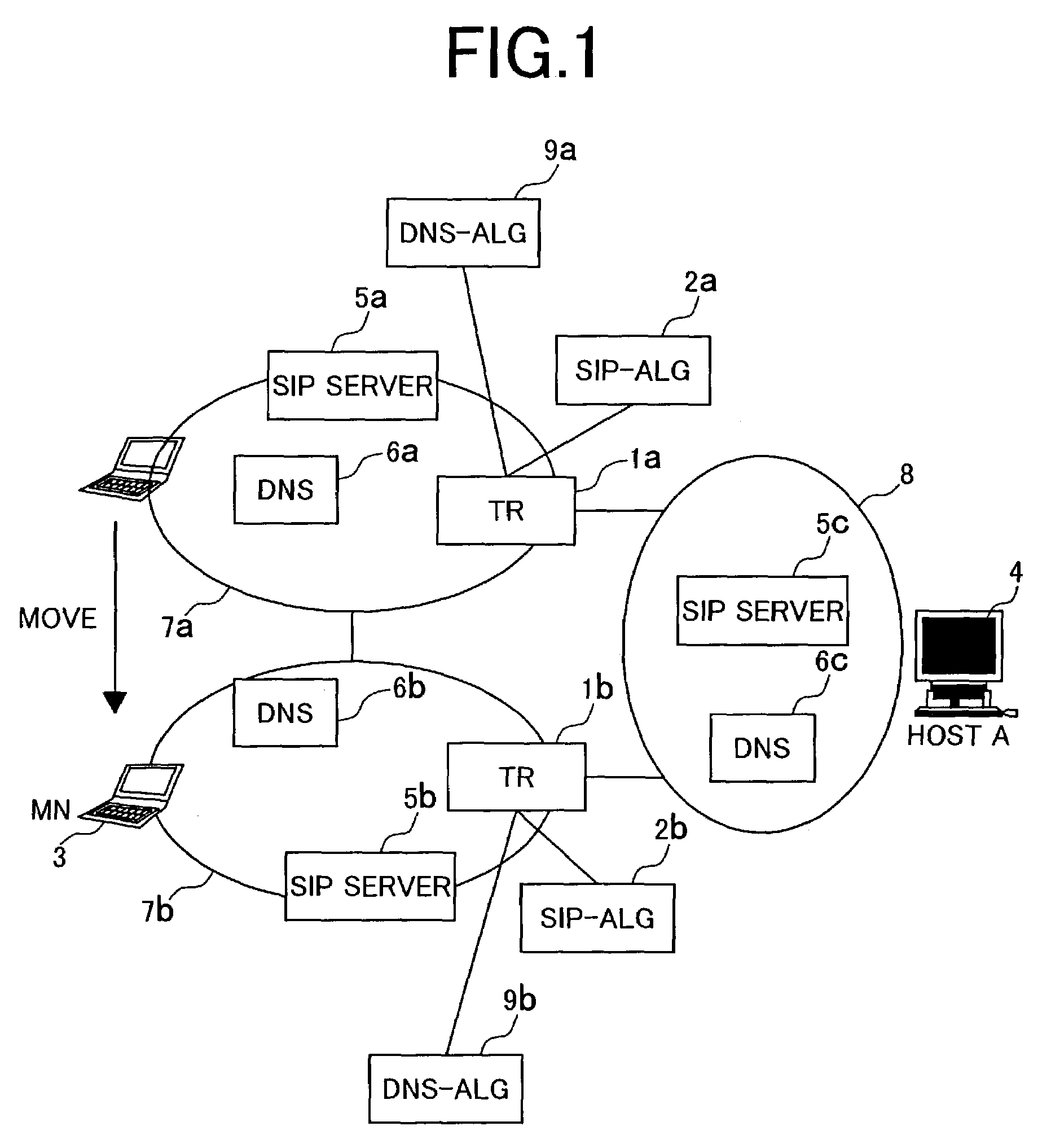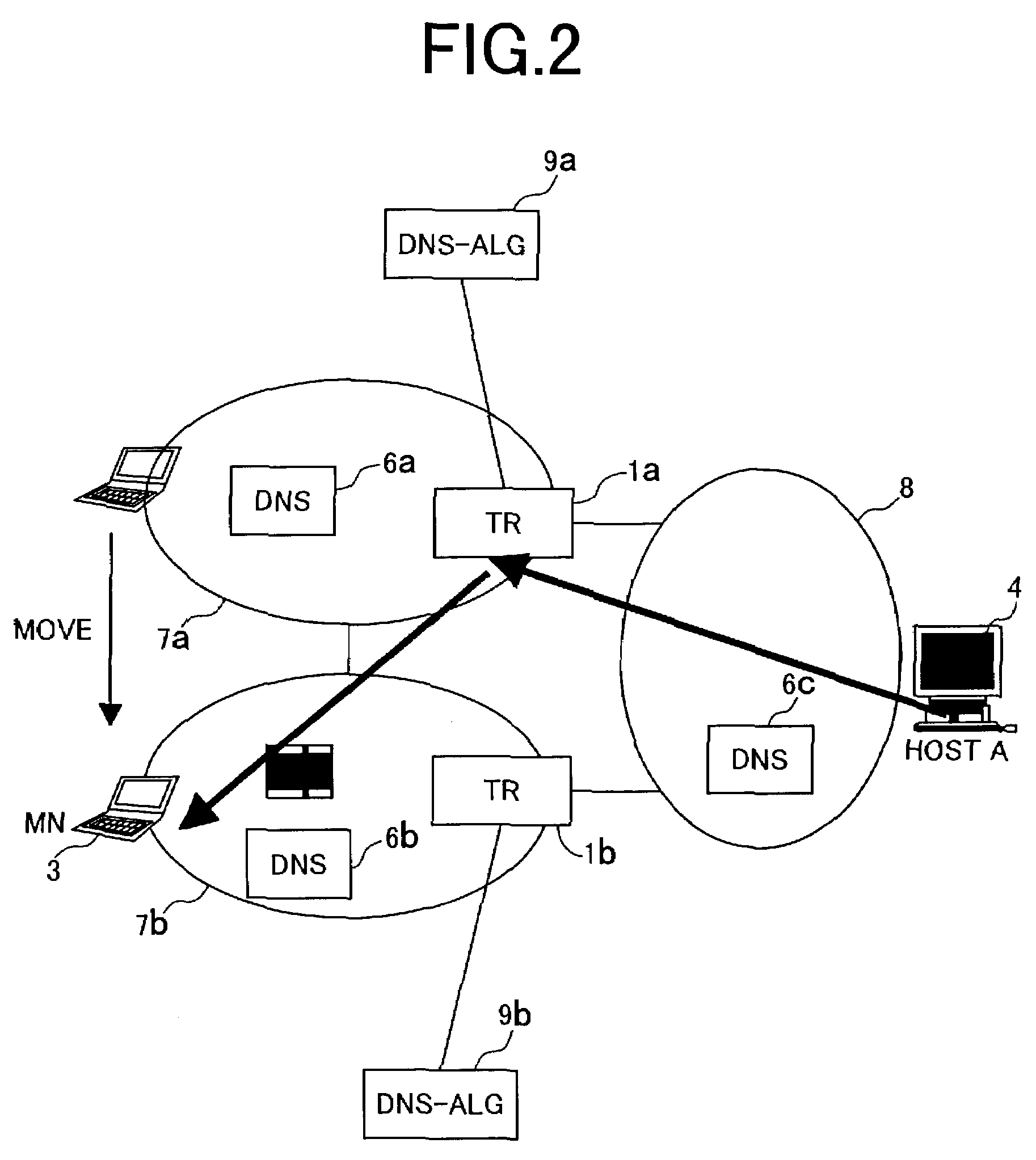Address translation equipment, terminal equipment and mobile communication method
a technology of address translation and equipment, applied in the direction of digital computer details, instruments, wireless commuication services, etc., can solve the problems of insufficient ipv4 addresses for the address translation unit to create address translation entries, inability to optimize the route between the mobile node and the ipv4 terminal, and insufficient ipv4 addresses for the address translation unit to achieve address translation entries
- Summary
- Abstract
- Description
- Claims
- Application Information
AI Technical Summary
Benefits of technology
Problems solved by technology
Method used
Image
Examples
first embodiment
[0081]Referring now to the drawings, description will be given of a first embodiment according to the present invention.
[0082]Description will be given in detail of a representative example in which a mobile node (MN) conforming to the mobile IPv6 on a visited network of the mobile node starts communication with an IPv4 terminal.
[0083]FIG. 1 shows an example of a communication network in which the mobile node communicates with the IPv4 terminal according to the present invention. The communication network includes networks 7 and 8. In the embodiment, the networks 7 (7a, 7b) are mobile IPv6 networks and the network 8 is an IPv4 network. Address translation units (TR) 1 (1a, 1b) respectively interconnect the networks 7 with the network 8.
[0084]The mobile IPv6 network 7a includes a SIP servers 5a and a DNS server 6a, and the mobile IPv6 network 7b includes a SIP servers 5b and a DNS server 6b. A mobile node 3 is a mobile node conforming to the mobile IPv6.
[0085]The network 8 includes a...
second embodiment
[0192]Referring now to the drawings, description will be given of the present invention.
[0193]The first and second embodiments differ from each other in the session control protocol type and the method of identifying the mobile node.
[0194]The second embodiment uses ITU-T H.323 as the session control protocol. The second embodiment identifies the mobile node by an alias address standardized in H.323.
[0195]FIG. 28 shows a configuration example of a communication network when a mobile node conforming to the mobile IPv6 communicates with an IPv4 terminal in the second embodiment.
[0196]In the second embodiment, an address translation unit 1 includes a unit to communicate with a H.323 address translation unit (H.323-ALG) 10 in place of the gateway (SIP-ALG) 2 and a unit to detect a H.323 message.
[0197]In the second embodiment, networks 7 and 8 each include a gatekeeper 30 in place of a SIP server.
[0198]The gateway (H.323-ALG) 10 includes (1) a unit to extract a translation parameter(s) ad...
third embodiment
[0212]In the third embodiment, the networks 7 and 8 each adopt ENUM DNS. The ENUM DNS manages information of a correspondence between telephone numbers and uniform resource identifiers (SIP-URI, H.323 alias addresses, and the like).
[0213]To send a packet to the mobile node 3, the terminal 4 specifies the mobile node 3 by a telephone number. The terminal 4 issues a query to the ENUM DNS for a uniform resource identifier (URI) of the mobile node 3. After the URI of the mobile node 3 is acquired, the terminal 4 executes processing similar to the processing of the first or second embodiment.
[0214]According to the third embodiment of the present invention, if a terminal specifies its communication party by a telephone number and translates the telephone number into a uniform resource identifier, it is possible to deliver a packet to a mobile IPv6 terminal not having a home address.
PUM
 Login to View More
Login to View More Abstract
Description
Claims
Application Information
 Login to View More
Login to View More - R&D
- Intellectual Property
- Life Sciences
- Materials
- Tech Scout
- Unparalleled Data Quality
- Higher Quality Content
- 60% Fewer Hallucinations
Browse by: Latest US Patents, China's latest patents, Technical Efficacy Thesaurus, Application Domain, Technology Topic, Popular Technical Reports.
© 2025 PatSnap. All rights reserved.Legal|Privacy policy|Modern Slavery Act Transparency Statement|Sitemap|About US| Contact US: help@patsnap.com



